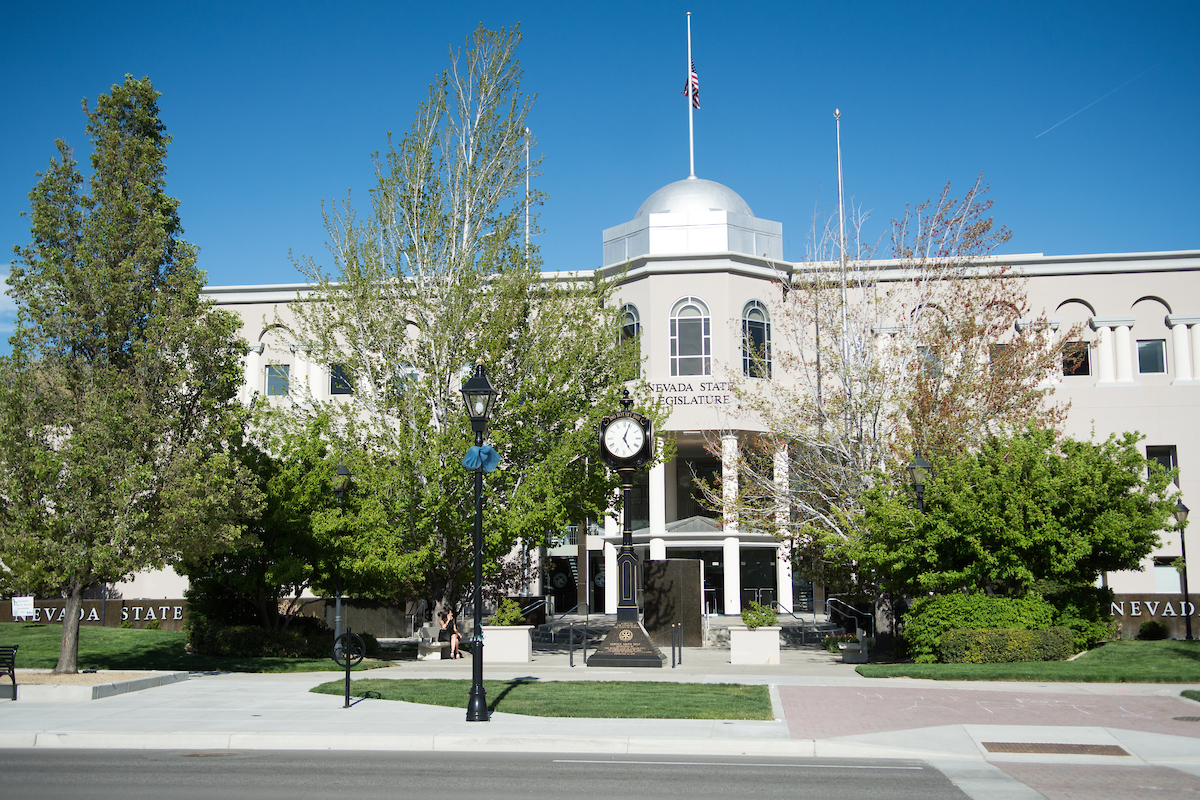Broken people, broken promises, broken workers' comp system

About twenty years ago I started a law practice representing insurers and employers in contested workers’ compensation cases. Later in my law practice, I represented police officers, firefighters, and a limited number of injured workers in special cases. Eventually, I stopped taking these types of cases because the administrative system for adjudicating them became time consuming, costly, and hopelessly frustrating. Nevertheless, I think working both sides of these contested cases over the years gave me a unique perspective into how the Nevada workers’ compensation system should work to serve employers, insurers, and injured workers efficiently and effectively.
Currently, because workers’ compensation cases are taking so long to adjudicate, Nevada employers are dealing with angry employees who are not timely receiving medical care and other benefits when they are injured on the job. This is driving lost time costs and causing work-related injuries to rise, while increasingly alienating employees in a time when employers are struggling to recruit and retain employees in a historically competitive labor market.
Workers' compensation insurance is specialized insurance purchased by employers to provide medical care, disability compensation (indemnity) payments, and rehabilitation services for workers who are injured on the job or who contract occupational diseases in the course of their employment. Workers' compensation was the first social insurance system in the United States. It developed as a consequence of the high rate of industrial accidents in the 19th and early 20th centuries.
Under common law, 19th century employers were required to provide a reasonably safe place for their employees to work. If an injury occurred, however, and the employer did not voluntarily pay compensation, then the employee had to take his case to court. The litigation which arose proved to be an unsatisfactory means of caring for injured workers. Uncertainty of outcome and the costs associated with the delay in compensating injured workers under a common law system were instrumental in the formation of the workers' compensation system. Even if the employee could afford legal assistance, the employer had several defenses that made it difficult for the employee to collect damages.
Modern workers’ compensation evolved in response to the perceived inefficiencies and inequities of the common law in providing remedies for injuries occurring in the workplace. At common law, an employee’s recourse for an on-the-job injury was to bring suit against an employer under tort law. In such a case, the employee was required to prove the negligence of the employer in order to prevail. Further, the employee was required to overcome common law defenses such as assumption of risk and contributory negligence. The employer, on the other hand, was subjected to costly litigation and faced the potential of an award of damages for personal injury. This system was regarded as slow, costly, and inconsistent with modern industry conditions.
The American form of workers’ compensation eliminates common law tort liability in favor of a no-fault system of compensation, in predetermined amounts based on factors such as the employee’s wages. This "no-fault" approach to workplace injuries was adopted by every state in the country.
Nevada was one of the first states to enact workers' compensation laws. The original industrial insurance act was adopted in 1913. This no-fault system is based in part on “a renunciation of the rights and defenses of employers and employees recognized at common law.” Thus, the exclusive remedy for work-related injuries in Nevada is the statutorily provided workers’ compensation scheme. Under this system, in exchange for limited liability, the employer pays some claims for which it would not have been liable under common law. The employee, on the other hand, gives up common law remedies in exchange for sure and certain relief.
The state’s industrial insurance laws have been amended during every regular legislative session since 1913, including a major overhaul of the workers compensation system in the early 1990s. In addition to the reforms made to the system in 1993, Nevada made a promise and codified it in statute, stating:
“The provisions of chapters 616A to 617, inclusive, of NRS must be interpreted and construed to ensure the quick and efficient payment of compensation to employees who are injured or disabled at a reasonable cost to the employers who are subject to the provisions of those chapters.” NRS 616A.005
Unfortunately, this promise has been broken in recent years.
In 2021, there were 29,800 nonfatal workplace accidents resulting in injuries and illnesses to Nevadans working for employers, resulting in an incidence rate of 3.3 cases per 100 full-time equivalent workers, according to the Bureau of Labor Statistics. Nevada was among 19 states that had an incidence rate of total recordable cases (TRC) significantly greater than the national rate of 2.7. Of the 29,800 private industry injury and illness cases reported in Nevada, 18,700 were of a more severe nature, involving days away from work, job transfer, or restriction—commonly referred to as DART cases.
These accidents and injuries resulted in workers compensation claims costing insurers and employers over $400,000,000 in total benefits paid. Then 20,470 of these claims became contested and were adjudicated by a hearing officer. Annually, the cost to adjudicate cases is estimated to be more than $50,000,000 in attorney, staff, and officer time and costs. Of the cases heard and decided by a hearing officer, 7,005 were appealed to an appeals officer. The costs to adjudicate these cases before an appeals officer annually is estimated to be over $35,000,000 in attorney, staff, and officer time and costs.
Unfortunately, the costs to adjudicate appeals is driven up higher than it should be because more than 46 percent of the cases that are appealed take more than a year to resolve. But there is a human cost too. Thousands of injured workers have been forced to wait over a year to receive medical care they need to treat their injuries, causing further injury and disability, and they also have been denied the compensation they are entitled to receive by statute to pay their bills while they are recovering from their work-related injuries. Many injured workers have become so frustrated with the system that they have ended up returning to work injured as they get treatment for their injuries through their own heath insurance, which ends up driving up the costs of health insurance for employers and employees.
On September 10, 2022, the Las Vegas Review Journal exposed this problem. The Department of Administration acknowledged the backlog in cases, but did not have a plan to address it. One of the last workers comp cases I handled for an injured police officer further illustrates the problem. I represented an officer who was out on patrol when he encountered a dangerous situation that resulted in the need to discharge his firearm at an assailant.
The officer called in shots fired and checked the status of the suspect. As he examined the suspect, who had had a large amount of blood visible on his body and was limp and unmoving. the officer began to breathe rapidly, saying “Shit, shit.” He became panicked and increasingly distraught as he checked the suspect’s wrist for a pulse and began providing lifesaving care. Unfortunately, he was unable to help the suspect recover from the gunshot wound. Although the officer was not physically injured during the shooting, he was covered in blood and emotionally distraught. He laid on the ground sobbing, hyperventilating, and slumped over in sadness over the death of the suspect.
The officer filed a workers comp claim for blood exposure and PTSD. The claim was accepted for the blood exposure, but inexplicably denied for the PTSD, despite the fact that he was exposed to a direct threat to his life during an extreme situation while acting in the normal course of his employment. His treating doctor causally related the PTSD to the incident, but the third party administrator ignored the doctor’s report — and denied the claim.
The officer appealed. After 16 months, several delayed hearings, and two independent medical evaluations, we finally “won” his case. The officer’s claim was finally accepted, and he was provided with mental health care and other workers compensation benefits. One doctor who provided an independent medical evaluation opined that the workers’ comp system had caused the officer more trauma than the shooting incident and had compounded the mental and emotional injuries he suffered. A win is not really a win when essential health care is delayed or denied. The system can’t turn back the clock and undo the harm done to the officer over the course of 16 months. Throughout the process, the officer felt alone, unappreciated, and mistreated by a system that was supposed to take care of him when he suffered injuries on the job, including mental and emotional injuries arising out of the extreme hazards of his job to protect and serve the public.
I am not a reporter. I am a commentator. But I am pleased to report to you, dear readers, that in response to the extended delays in delivering benefits caused by Nevada’s workers’ compensation system, the Legislature is taking up a few bills intended to hold bad actors in the system accountable and reform the system. Additionally, stakeholders in the system representing injured workers, Nevada employers, and their insurers are collaborating on comprehensive reforms that will soon be presented to the Legislature for consideration and debate.
Among the changes being considered: All hearing officers and appeals officers will be required to be attorneys and appointed by governor; there will be an oversight committee established to develop metrics for accountability, monitor the system, and ensure that it is performing in accordance with legislative intent when it comes to quick and efficient adjudication of claims at reasonable costs; greater accountability for insurers and third party administrators who delay or mishandle claims; increased fines and penalties for insurers and third party administrators who don’t comply with orders from hearing officers and appeals officers; streamlined discovery; and guaranteed timely in-person hearings. Look for a bill to drop over the coming weeks with bipartisan support from legislative leadership.
As these important changes and others are debated and considered this session, I hope the Legislature will remember its promise to injured workers, employers and insurers, and adopt meaningful reforms that deliver a quick, efficient, and fair system for delivering workers’ compensation benefits.
Jason D. Guinasso is the managing partner of the law firm of Hutchison & Steffen’s office in Reno. He is a litigator and trial attorney who also maintains an appellate practice, which includes petitions for judicial review of administrative decisions, extraordinary writs, and appeals to the Nevada Supreme Court. He also is the co-founder/general counsel for the Charleston Law Center for survivors and an associate pastor at Ministerio Palabra de Vida where he serves a diverse multicultural church.
